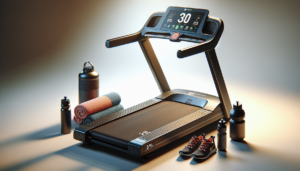What is a Somatic Workout?
Somatic workouts are a holistic approach to fitness that emphasize the mind-body connection. Rather than focusing solely on physical exertion, somatic movements aim to increase body awareness, release muscular tension, and promote emotional well-being. By tuning into the inner experience during exercise, practitioners develop a deeper understanding of their bodies and learn to move with greater ease and intention.
Understanding Somatic Movement
At its core, somatic movement is about reconnecting with the body’s innate wisdom. It recognizes that our physical sensations are intricately linked to our emotions and mental states. By bringing mindful attention to the way we move, we can uncover and release deeply held tension patterns that contribute to pain, stiffness, and emotional distress.
Somatic practices often involve slow, gentle movements that prioritize internal experience over external form or performance. The goal is not to push the body to its limits but rather to cultivate a sense of ease, fluidity, and self-awareness. Through this process, practitioners learn to trust their body’s signals and respond with compassion and care.
The Principles of Somatic Workouts
While somatic workouts can take many forms, they are generally guided by a few key principles:
- Mindfulness: Bringing full attention to the present moment and observing physical sensations, thoughts, and emotions without judgment.
- Breath awareness: Using the breath as an anchor for mindfulness and a tool for releasing tension.
- Slow, intentional movement: Moving with care and curiosity, allowing the body to guide the pace and range of motion.
- Non-judgment: Accepting the body as it is in each moment, without striving for a particular outcome or ideal.
By embodying these principles, somatic workouts offer a refreshing alternative to the “no pain, no gain” mentality that often dominates fitness culture. Rather than forcing the body into submission, somatic movement is about listening deeply and responding with kindness.
Benefits of Somatic Workouts
The benefits of somatic workouts are far-reaching, impacting physical, mental, and emotional well-being. Here are some of the key advantages:
Chronic Pain Relief
For those living with chronic pain, somatic movement can be a game-changer. By gently releasing muscular tension and retraining dysfunctional movement patterns, somatic practices can significantly reduce pain symptoms. Studies have shown that somatic exercises are effective for managing conditions like back pain, neck pain, and fibromyalgia.
The slow, mindful nature of somatic movement also helps to deactivate the nervous system’s stress response, which can exacerbate pain. By promoting relaxation and body awareness, somatic workouts enable practitioners to interrupt the cycle of pain and tension.
Improved Flexibility and Mobility
Somatic workouts are highly effective for improving flexibility and mobility. Unlike traditional stretching, which often involves pushing the body to its limits, somatic stretching works with the nervous system to release chronic muscular contraction.
Through a process called pandiculation, which involves gently contracting and releasing muscles, somatic movement helps to retrain the brain’s sensory-motor feedback loop. Over time, this leads to greater ease of movement, improved posture, and a reduced risk of injury.
Anxiety Reduction and Emotional Well-being
The mind-body connection is at the heart of somatic movement. By tuning into physical sensations and breath, practitioners learn to regulate their nervous system and calm anxious thoughts. Somatic workouts provide a space to process emotions that may be stored in the body, leading to greater emotional resilience and overall well-being.
Research has shown that somatic practices can be effective for reducing symptoms of anxiety and depression. The combination of mindful movement, breathwork, and body awareness helps to shift the nervous system out of fight-or-flight mode and into a state of relaxation and ease.
Trauma Healing and Emotional Processing
For those who have experienced trauma, somatic movement can be a powerful tool for healing. Trauma is often stored in the body as physical tension, constriction and disconnection. By gently reconnecting with bodily sensations, somatic practices help to release this stored trauma and promote emotional processing.
Somatic workouts provide a safe, controlled environment to explore and release emotions at a pace that feels manageable. The emphasis on self-awareness and self-compassion enables practitioners to develop a more loving and accepting relationship with their bodies, even in the face of difficult emotions or memories.
Techniques and Practices in Somatic Workouts
Somatic workouts encompass a wide range of techniques and practices, each with its own unique focus and benefits. Here are some of the most common:
Somatic Stretching
Somatic stretching, also known as pandiculation, is a gentle, relaxed form of movement that targets the nervous system’s sensory-motor feedback loop. Rather than stretching muscles to their limit, somatic stretching involves a sequence of gentle contraction, release, and relaxation.
By consciously engaging and releasing muscles, somatic stretching helps to reset the nervous system’s tension threshold, leading to greater ease of movement and reduced muscle tightness. This practice is particularly beneficial for those with chronic pain or stiffness, as it helps to interrupt the cycle of tension and discomfort.
Breathwork
Breathwork is a foundational practice in somatic movement. By bringing mindful attention to the breath, practitioners learn to regulate their nervous system and promote relaxation. Somatic breathwork often involves slowing down the breath, emphasizing the exhale, or using specific breathing patterns to release tension.
In addition to its calming effects, breathwork can also help to deepen body awareness. By tuning into the subtle sensations of the breath moving through the body, practitioners develop a more nuanced understanding of their physical and emotional states.
Yoga and Tai Chi
Yoga and tai chi are both ancient practices that incorporate elements of somatic movement. In yoga, the emphasis on mindful breathing, gentle movement, and body awareness aligns closely with somatic principles. Tai chi, with its slow, flowing movements and focus on internal experience, is also a powerful tool for cultivating the mind-body connection.
Both practices offer a wide range of physical and mental benefits, including improved flexibility, balance, and relaxation. By approaching yoga and tai chi with a somatic mindset, practitioners can deepen their experience and reap even greater rewards.
Dance and Movement
Dance and free-form movement can be wonderfully somatic experiences. When approached with mindfulness and self-awareness, dancing becomes a powerful tool for emotional expression and release. Somatic dance practices often involve tuning into the body’s natural impulses and allowing movement to arise spontaneously.
By letting go of judgment and expectation, somatic dance enables practitioners to tap into their authentic selves and experience a sense of freedom and joy. This practice can be deeply healing for those who struggle with body image issues or self-expression.
Incorporating Somatic Workouts into Daily Life
One of the beautiful things about somatic movement is that it can be integrated into daily life with ease. Here are some tips for incorporating somatic practices into your routine:
Daily Somatic Movements
Set aside 5-15 minutes each day for somatic movement. This could be as simple as a few gentle stretches or a short somatic yoga sequence. The key is to move slowly and mindfully, tuning into your body’s sensations and allowing yourself to release tension.
Over time, these daily practices can have a profound impact on your physical and emotional well-being. By consistently giving your body the opportunity to unwind and reset, you create a foundation of resilience and ease.
Mindfulness and Inner Awareness
Bring somatic awareness into your daily movements and activities. As you go about your day, take moments to check in with your body and breath. Notice any areas of tension or discomfort, and see if you can soften and release.
You can also incorporate somatic principles into your existing exercise routine. Whether you’re running, lifting weights, or taking a fitness class, try bringing mindful attention to your movements and physical sensations. This inner awareness can help you move with greater efficiency and reduce the risk of injury.
Listening to Your Body
Above all, somatic movement is about listening to and honoring your body’s needs. This means moving at a pace that feels safe and comfortable, and not pushing beyond your limits. It also means being willing to modify or skip certain movements if they don’t feel right for your body in the moment.
This can be especially important for those with a history of trauma. Somatic practices can stir up intense emotions or physical sensations, and it’s crucial to move at a pace that feels manageable. Working with a qualified somatic therapist or movement teacher can provide valuable guidance and support.
Scientific Support for Somatic Workouts
While somatic movement is often associated with alternative or holistic health practices, there is growing scientific evidence to support its benefits. Here are some key findings from recent studies:
Research on Chronic Pain and Somatic Practices
A 2019 study published in the Journal of Alternative and Complementary Medicine found that a 12-week somatic movement program significantly reduced chronic low back pain in participants. The study authors noted that somatic exercises were effective for improving both pain symptoms and functional movement.
Another study, published in the Journal of Bodywork and Movement Therapies in 2020, examined the effects of somatic yoga on chronic neck pain. Participants who completed an 8-week somatic yoga program experienced significant reductions in pain intensity and disability, as well as improvements in range of motion and quality of life.
These findings suggest that somatic practices can be a valuable tool for managing chronic pain conditions, offering a safe and effective alternative to more invasive treatments.
Psychological Benefits and Emotional Health
Research has also highlighted the psychological benefits of somatic movement. A 2021 study published in the Journal of Creativity in Mental Health found that a 12-week somatic movement therapy program significantly reduced symptoms of anxiety and depression in participants.
The study authors noted that somatic practices provide a powerful way to process and release emotional distress that may be stored in the body. By promoting self-awareness and self-regulation, somatic movement enables individuals to develop greater emotional resilience and overall well-being.
Other studies have found that somatic practices can be effective for reducing stress, improving sleep quality, and enhancing overall quality of life. As the scientific community continues to explore the mind-body connection, it’s likely that we’ll see even more evidence to support the benefits of somatic movement.






